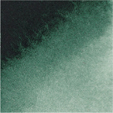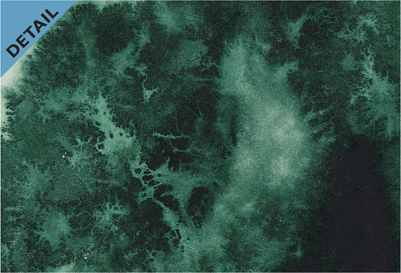WATERCOLOR LESSON 2
Bird of Paradise with Geri Medway
The vibrant colors and diverse shapes of flowers always add interest to a composition, but there’s no need to restrict yourself to painting flowers in groups. Focus on a single flower to create a delicate floral “portrait,” as Geri Medway has done with this close-up view of a bird of paradise in bloom. The layers of glazes produce deep, rich tones, and the contrast of bright colors against the dark background help make this exotic tropical flower leap off the paper!
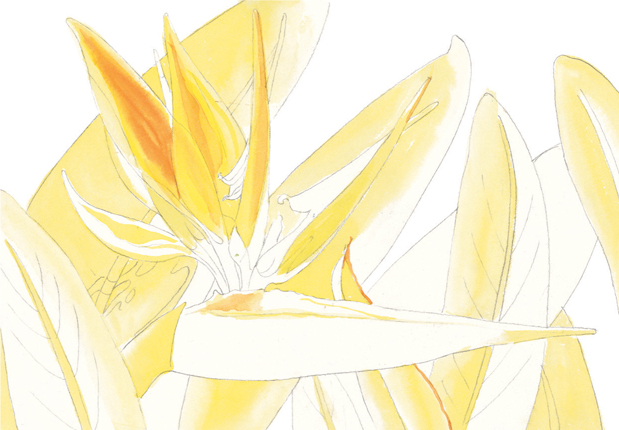
1 After sketching the shapes, lay in the initial washes with a large round brush. Start with a thin cadmium yellow light wash for the outer edges of the leaves and some of the central veins. Then deepen the area with a higher concentration of color for the background leaves and what appear to be the “neck,” “beak” outline, and “feathers” of the flower. When the first washes have dried, add cadmium orange to darken the “eye” and the “feathers” of the flower.
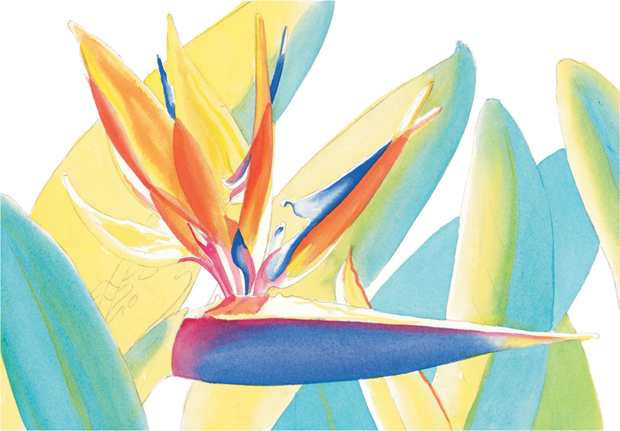
2 To create the form of the leaves, wash bright vermilion on the foreground leaves, using both flat and graded washes. Next lay in a graded wash of permanent rose along the flower’s “beak” and on the lower “feathers.” When dry, add a graded wash of ultramarine blue on the beak and some of the “feathers.” Then finish the “feathers” with glazes of cadmium red deep. Finally, glaze peacock blue to cool some areas of the leaves, allowing the color to blend here and there with the yellow underpainting.
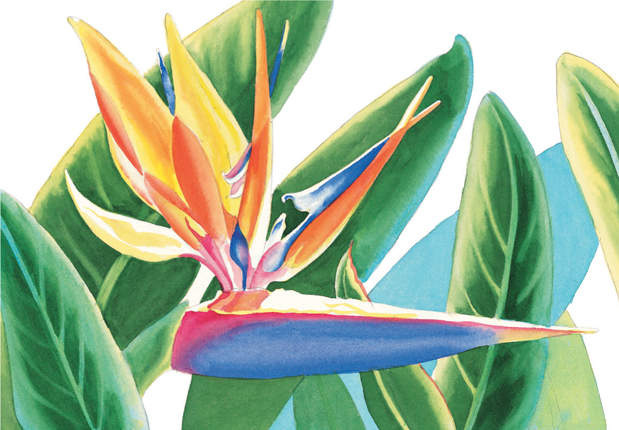
3 Glaze the green leaves with a mixture of sap green and phthalo blue, using just enough blue to tone down the green. Continually vary the proportions of each color in the mix to create cooler and warmer areas within the painting. When the paint is dry, apply another glaze to deepen the greens. Lift out color for the veins and soften the leaf edges with a damp brush (see the details on page 25).
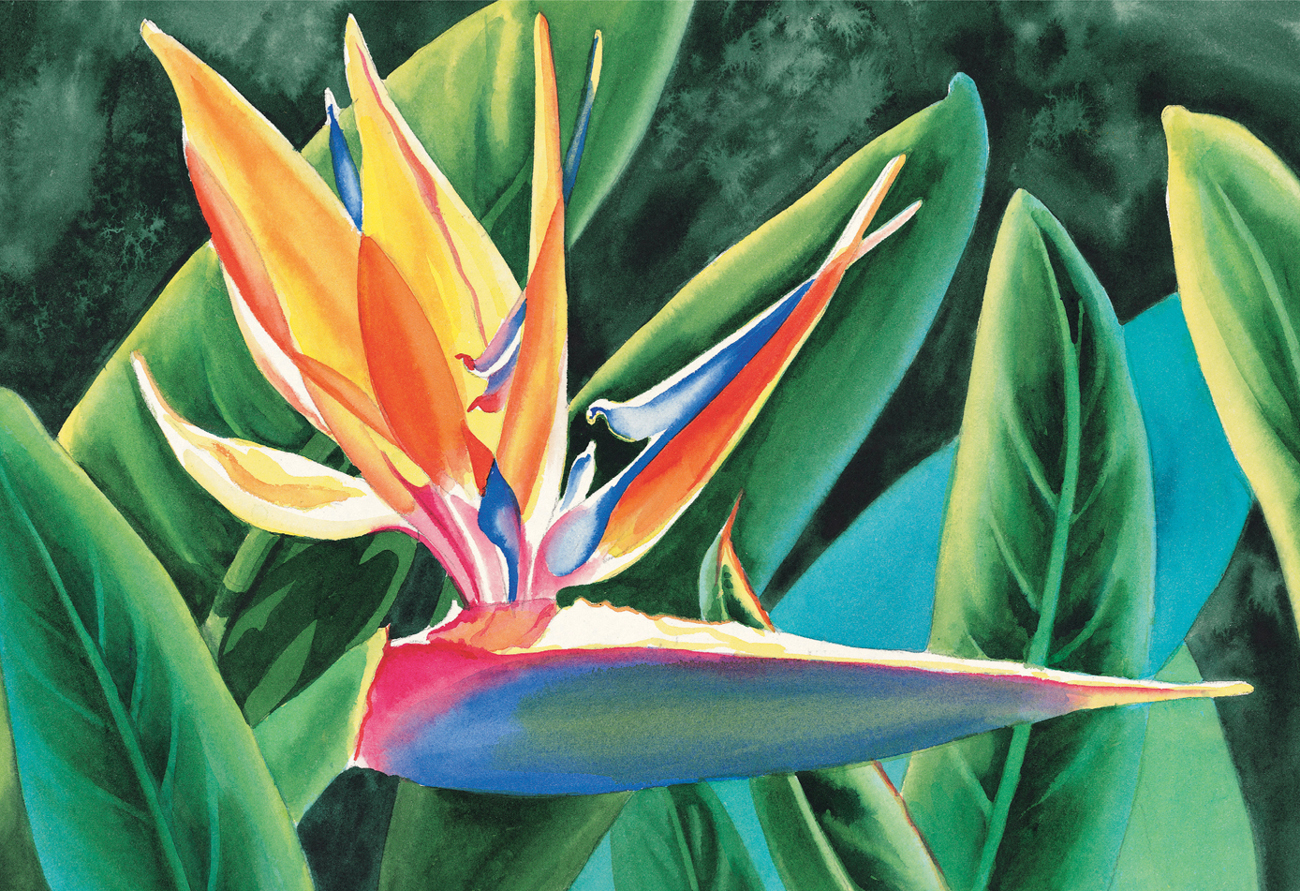
4 To finish, wash peacock blue over the cool side of the leaves before glazing another layer of the sap green and phthalo blue mix over the leaves. Glaze the warm areas with cadmium yellow medium and the cool areas with peacock blue. Then add cadmium red deep along the flower’s “neck” and on the “feathers.” Wet the ultramarine blue area of the “beak” and touch in a little sap green. Then push back the background leaves by softening the edges. Finally, paint in the dark background (see “Background Detail” below) to make the flower “pop” forward and to add drama to the entire painting. Stand back from your painting—the flower should seem real enough to touch and smell!


